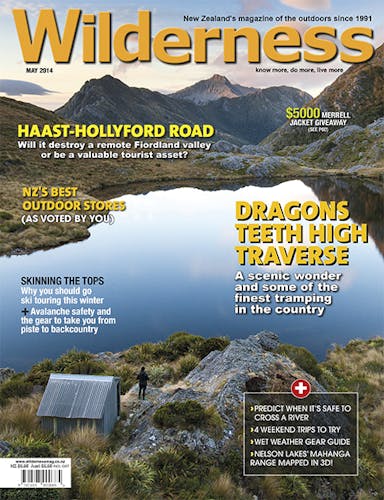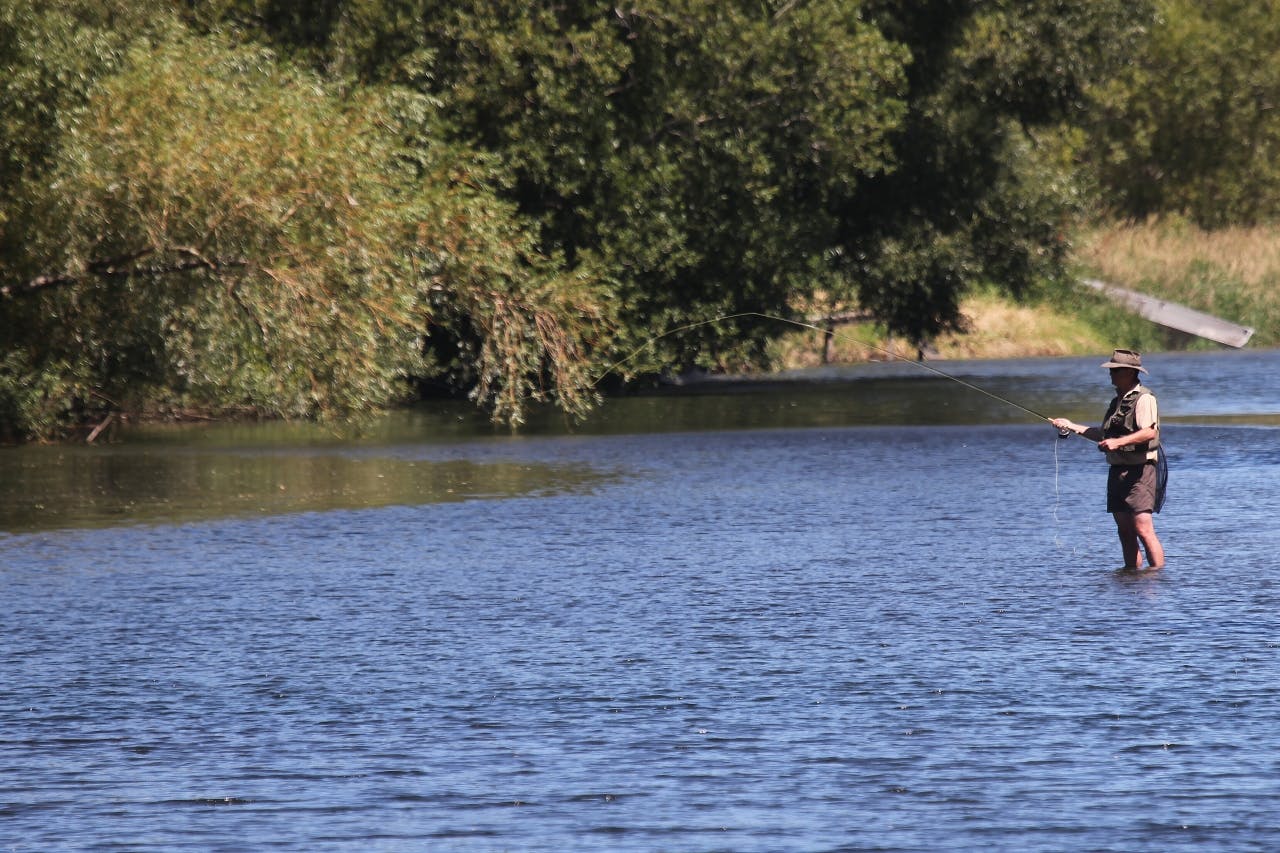These five easy-access fishing locations could have you bagging that trophy trout you’ve always dreamed of. By Ron Giles
Mangawhero River, Ohakune
The Mangawhero River rises on the southern slopes of Mt Ruapehu – one of several major rivers that do so. The headwaters are fast and furious: not really worth the trouble to fish. The upper reaches flow through the dense native forest that cloaks the lower part of this majestic mountain, but it is not until the river slows somewhat, around the town of Ohakune, that fishing becomes productive.
Below the town, the river flows through farmland for about 10km before entering a deep, channelled section. The fish in this stretch are mainly browns and average 1.5kg. Below the main highway bridge down, there is good fishing for 15km to the Raukawa Falls at Kakatahi.
Lake Okataina, Rotorua
This lake is easily the most picturesque of all the Rotorua trout lakes, nestled as it is beneath steep, bush-clad hills. Okataina has become a trophy fish lake in recent years, taking over from nearby Rotoiti and Tarawera.
The lake is sited 10km out of Rotorua on the road to Whakatane. A side road to the right wends its way through beautiful native bush to the lake which has an area of 12km², a shoreline of over 30km and a depth of 85m.
Flyfishing from boats is the most popular fishing method as access around the lake is restricted by the heavy bush that grows down to the water’s edge. Log Pool, at the mouth of an unnamed stream on the western side of the lake, is the most famous fishing spot.
Lake Arapuni, Waikato
Lake Arapuni is the second last of the Waikato hydro lakes and is sandwiched between Lakes Waipapa and Karapiro. It is perhaps the most popular lake, partly due to its location near several population centres but mainly because it offers the best trout fishing. The fish are mainly rainbows although some large browns are taken below the powerhouse. The rainbows average around 1.5kg but several 4kg trout are taken each year so there is always a chance to catch a trophy fish. Arapuni is not very friendly to the shore-based angler as access around the lake is very limited. Fishing is possible from the Arapuni headrace bridge and from the few places where a road runs down to the lake. Because of this lack of access, most of the angling is from boats as all of the lake can then be fished. The most favoured spot is around the ‘Sticks’ area at the top of the lake.
Cobb River, Kahurangi National Park
The remote Cobb River starts at the outlet of Lake Cobb, high in Kahurangi National Park. The river flows for 12km through a wide, glacier-formed valley before draining into the Cobb Reservoir. Rainbows and browns averaging 1kg can be caught in the reservoir. Below the reservoir, the river rambles for a further 8km until it joins the Takaka River which flows into Golden Bay. Access to the Cobb River is provided by Cobb Dam Road that turns off SH60 at Upper Takaka. The best fishing is found from the reservoir upstream where the fish are mainly rainbows and average 1.5kg.
Selwyn River, Canterbury
This lowland river begins its long path to the sea in the Big Ben Ranges and then meanders across the Canterbury Plains to enter Lake Ellesmere. These days the river is a shadow of its former self, having being badly affected by water extraction and dairy farming. However, there is still good fishing to be found in the lower river up from Lake Ellesmere. The best fishing is early season when the sea-run browns enter the river. These large fish are best targeted in lowlight hours when they will prove easier to catch than the wary resident fish. Spinning is the most common angling method but fly-fishing in the evening can be very effective during the regular insect hatches.
– Ron Giles is the author of numerous trout fishing books and runs trout-fishing-new-zealand.com







